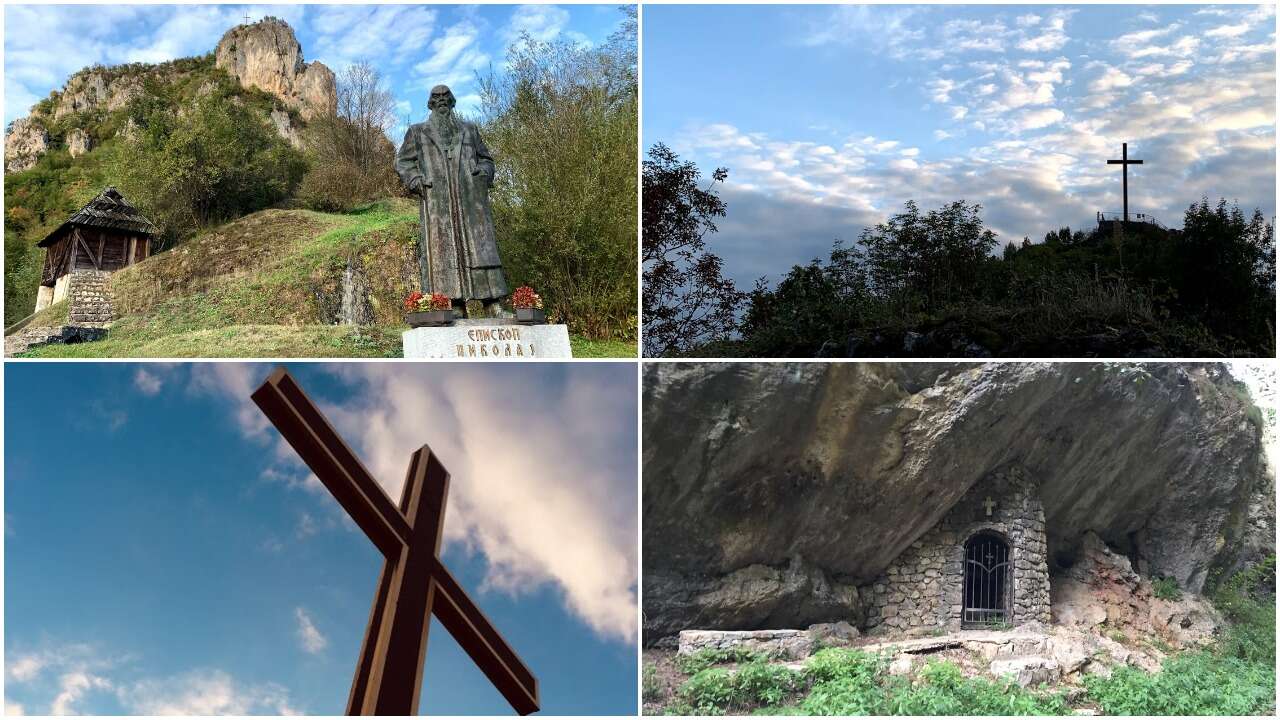That thing, way up there?
This is the first question everyone who sees an imposing rock with a large cross for the first time – the trademark of Soko Grad (Falcon Town), once a fortress in western Serbia near Ljubovija, and today one of the most beautiful places in this part of Europe.
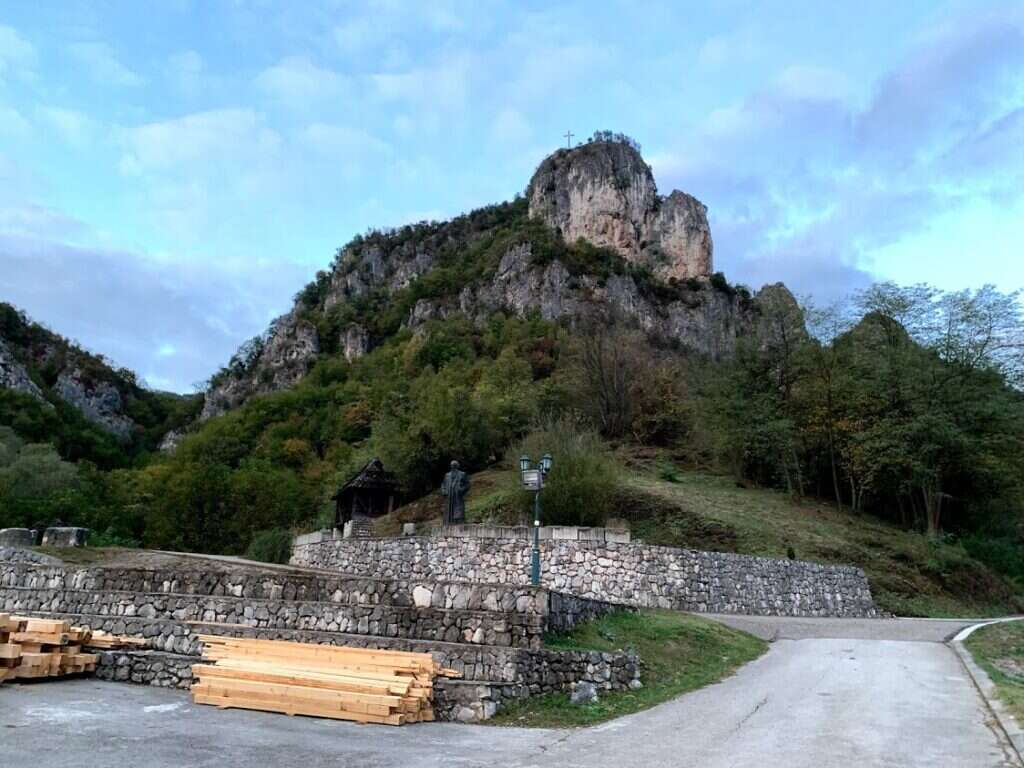
First question, because the rock and the cross are 200 meters above you, and the road to this place is a 2 kilometer long ascent that does not forgive anyone.
At the beginning of the ascent, a statue of the bishop of the Serbian Orthodox Church, Nikolai Velimirovic, awaits you, as if warning that a real test is ahead.
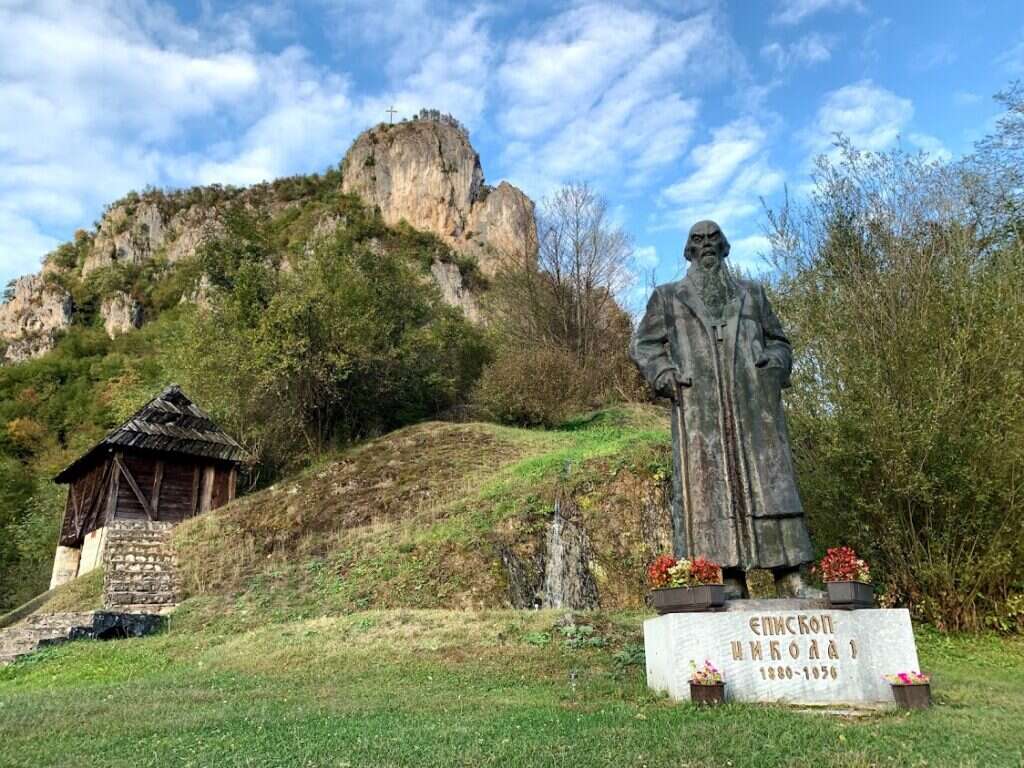
And so it is. Even the fittest will need more than half an hour to reach the “reward”, or top with a cross, but you won’t be bored by the way. On the contrary.
For every 200 meters, there is a chapel, and in it the commandment of God. 10 chapels, 10 commandments of God. So you have time to rest beside each, figure out where you are, and think about how you live your life.

And around you – perfect and untouched natural beauty. The only traces of civilization are the Monastery of St. Nikolaj, located at the foot of a mountain and several shepherds chasing their sheep.
How ever impressive this place is, the story about it is even more impressive. Soko Grad is a fortress, the only one in this part of Europe that has never been conquered. When you look at it closely, you know why. It is impossible, impossible.

The fortress, though, had various masters, but they always changed after arrangements. The Turks stayed there the longest, and the Serbs hated this invincible place so much that Captain Petar Radojlovic ordered the fort to be blown up in 1862.
And why?
Built in the Middle Ages by Serbian rulers, Soko Grad became the most notorious place of torment for Serbs, after it fell into the hands of the Turks. Written records of this date back to 1476, when the dizdar (commander) of the fortress Sokol Kemal is also mentioned.
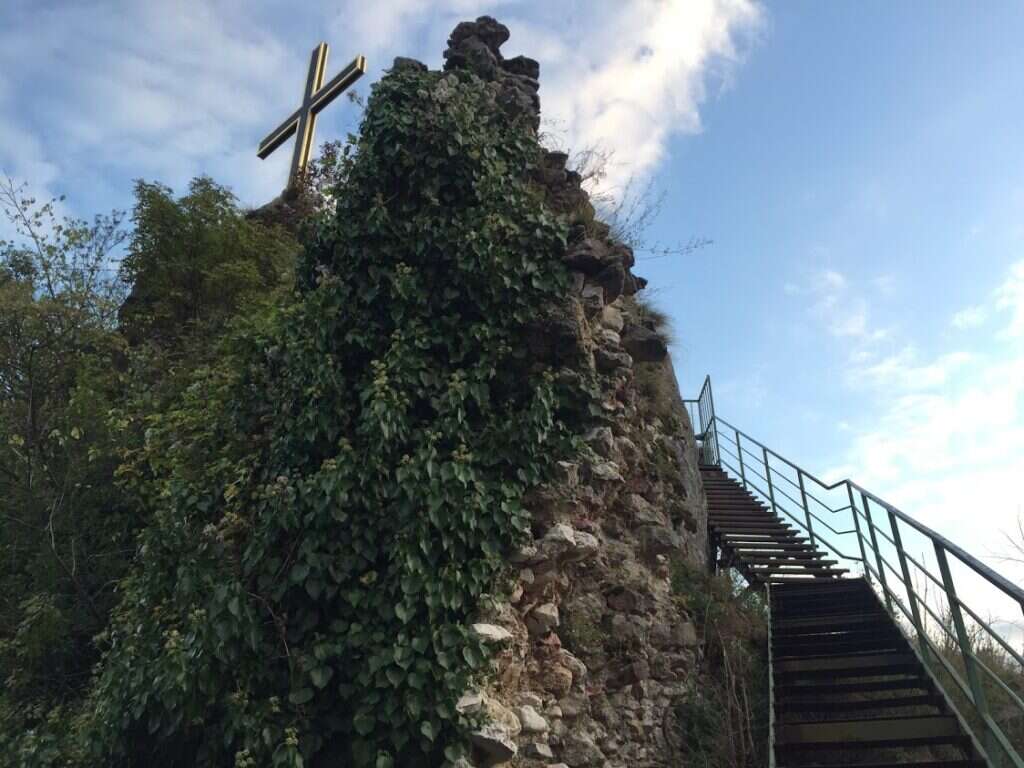
People were brought here on a massive scale, imprisoned and tortured, and the stories spread so much among the population that there was nothing left but to destroy this place.
Many times attacked, but never conquered, it was nicknamed the “Sultan’s Bride”. It was not until 1862 that it was surrendered to the Serbs, at the request of the great powers of the world.
As we climb to our destination, the cross at the top, we enjoy the view of the perfect wilderness, and imagine how brilliant of an idea it was to make a fort here, knowing that the chances of it being conquered were really minimal. Because every part of this space seems to be designed to protect whoever is at its top.
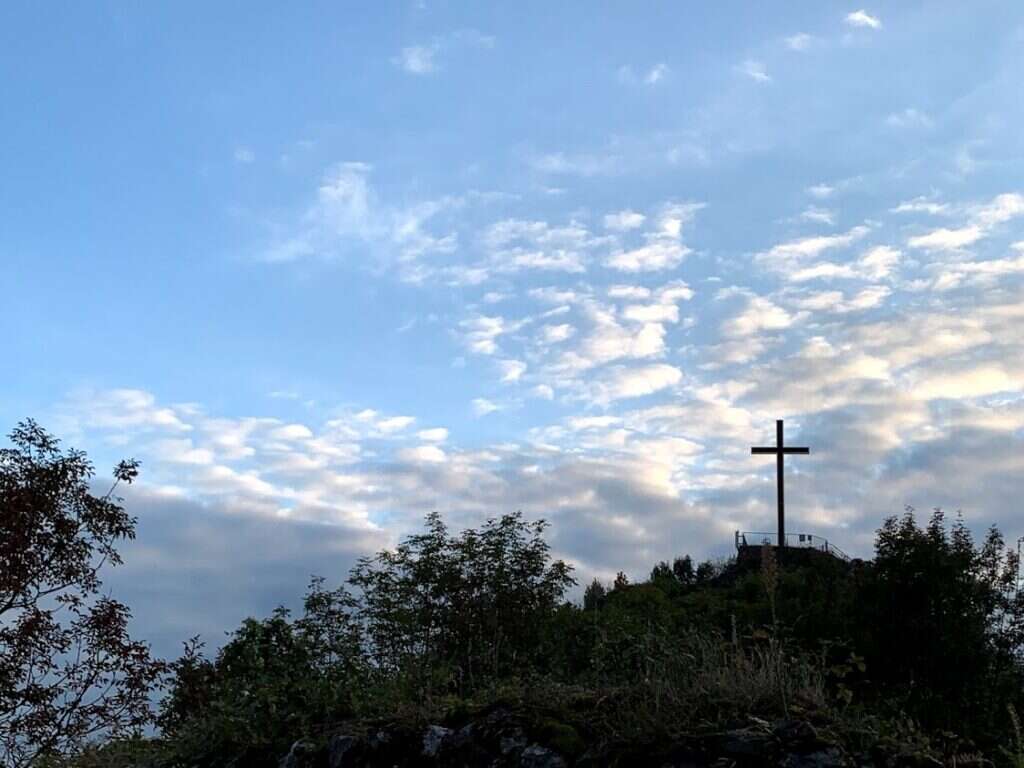
The fort consisted of two parts: on the highest ridge there was a large elliptical wall with two towers, one on the south side of the cliff and the other on the north. In the lower part of the fort was a tower with a rectangular base, through which one entered the upper part, and below it two similar towers.
Today, due to the destruction and blasting, little remains of the fort itself have been left, and a concrete plateau has been erected on the foundations of one of the towers and a large cross was then erected. Bishop Lavrentije erected a monastery dedicated to Bishop Nikolai Velimirovic under that cross, at the foot of Soko Grad.
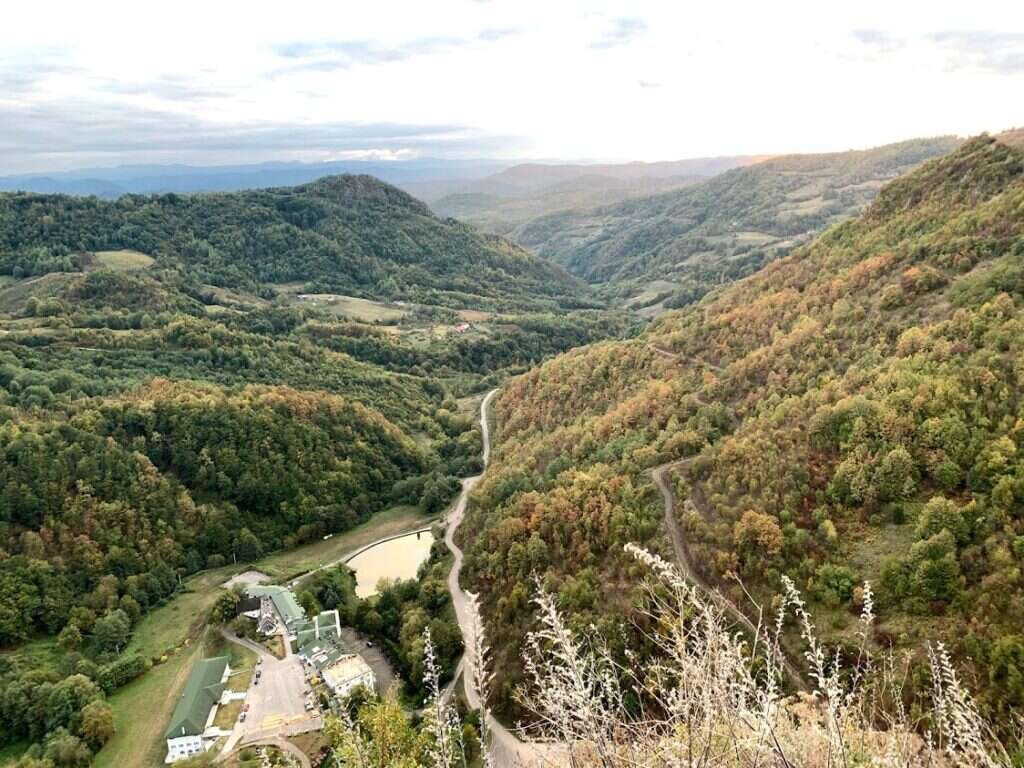
We climb to the top, and reach our prize. In front of us is a huge cross, and below us an incredible view of, it seems, half of Serbia. It was well worth the effort. As we stand up at the top of the world, images of chapels bearing the commandments of God are lurking in our heads.
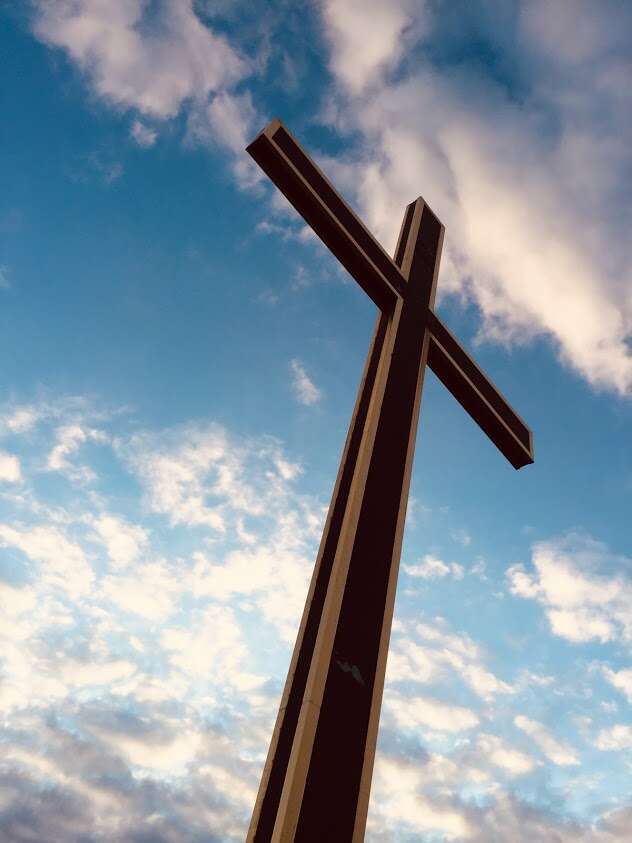
At the very top there is a kind of miracle awaiting us: on the metal fence, who knows how and from where it came, one big green grasshopper crouches, calmly watching the visitors who come to admire this beauty. We don’t know why he stands here, how he got here, and what’s in his head. All we know is that he was not at all afraid of us, as we approached him to take pictures and hinder him in his meditation.

In 2001, the Serbian Armed Forces arranged a route that could easily reach the monastery and Soko Grad.
This text was published as part of the project “Seven Wonders of Ljubovija” and co-financed by the Municipality of Ljubovija
(Come to Serbia)
